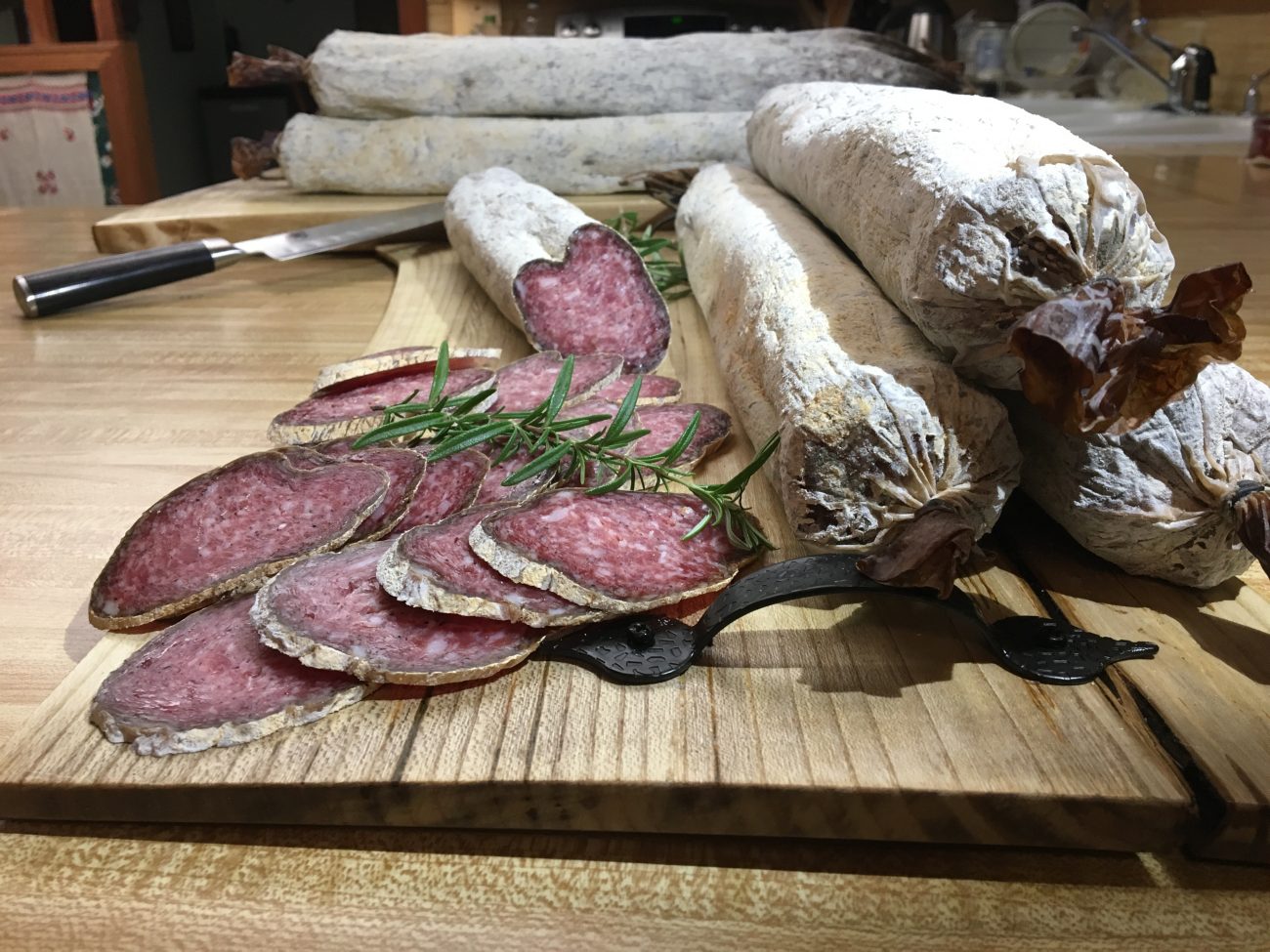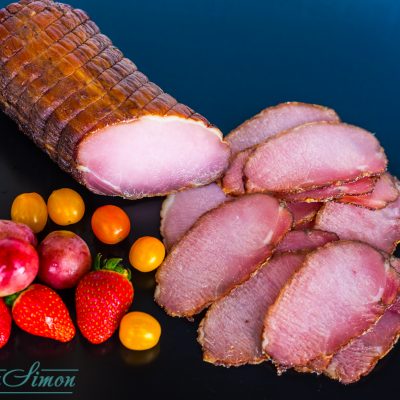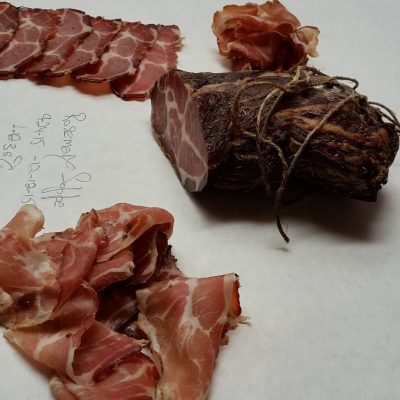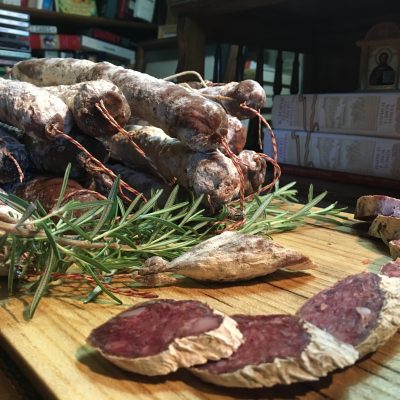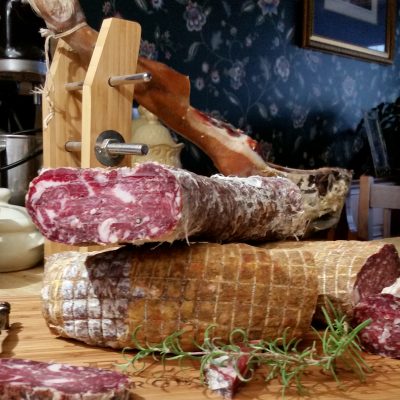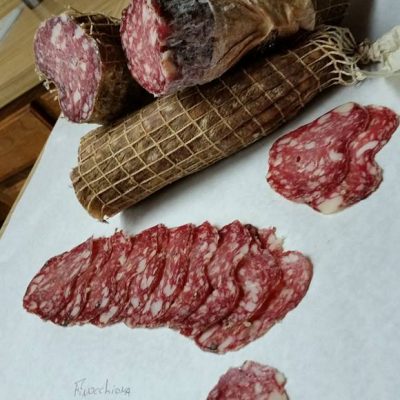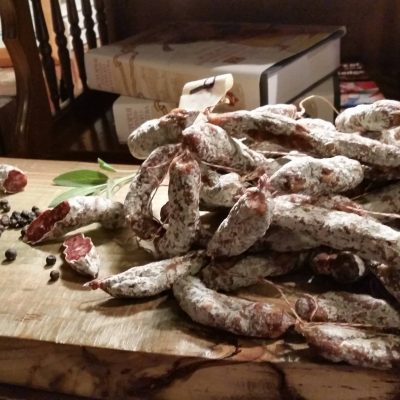Directions
If a manual contains a title a la “Croatian Salami”, especially followed by “Malorussian\Little-Russian Sausage” ( if you use the title, make sure there are no Ukrainians around — you might get hurt) and “Polish Sausage,” , you know that these recipes have as much to do with the country of origins as a North American product by the name of “Italian sausage” with anything from Apennines. At best, these titles imply some general sausage-making direction from the locality or ethnicity. Hence, I accept in advance the rightful criticism of my Croatian colleagues that this sausage can be called Croatian to the same degree as the members of British Royal Family can be designated as English.
The recipe comes from a Russian translation of 21st edition of “Die Fabrikation feiner Fleisch-und Wurstwaren” by Koch and Fuchs. The book is advertised for its “1249 recipes” and worth around $60 plus shipping from Russia. I hope one day some publishing house in USA could produce a translation in English.
An important note at the beginning:
I’ve been surprised by this sausage. As they say in Oklahoma, if God is willing and the creek won’t rise, I’ll make it again next year or so. Yet, I’m not sure if I’ll be able to replicate what I got this time.
I’m planning to turn off my “Curing Chamber” in June until middle of September. It’s too hot in Tulsa. My big commercial fridge that already has seen its best days has difficulty to keep the right temperature while staying in the garage. Hence, since the recipe indicated that the end product would present something decent, “safe” and traditional for the consumption during the Summer and Early Fall, I’ve started with over 18 kg of “Croatian Salami.” My risk paid off. I got much better product that I’ve expected.
Those who follow my recipes know how much I love the aroma and depth of porcini. Although they are not part of this sausage, the flavor is there. As I was removing the casings before vacuum-sealing sausages, it smelled like an open can of dry porcinis.
The aroma is deep, earthy, complex with hints of sweetness and nuttiness. Yet, after the casing was removed, the aroma subsided. I can’t attribute it all to the cold-smoke over pecan with apple. Here is my theory. After cold-smoking, the sausages were dry-curing immediately next to manga hams. The hams – only one remaining at this time – passed the mark of 2 years. For the past six month or so, the “ham mites” have been working overtime: I have to clean up the dust from the floor weekly. As I think about it, their parasitic modus operandi and goals are not that different from our wise politicians with one exception: we still argue about the possible benefits of the mites…
Due to the higher humidity and the proliferation of the Penicillium nalgiovense in the chamber, the sausages were soon covered by the mold. I’ve removed the mold once with solution of Potassium Sorbate. After lowering humidity, I allowed moderate grows of the mold. Hence, I attribute this aroma to whatever is coming from the hams.
Yet, as I type this, I’m wondering if this environment by now created my own “terroir” in the Curing Chamber. If I sanitize everything in two month, it will be lost. Maybe I should just remove all meats and keep the fridge on 60-65F. What do you think? Would be a health risk?
The recipe, found in the book under 2-079 designation:
Pork 1 (lean): 40%
Pork II (semi-fat): 40%
Back-fat: 20%
Cure #2: 0.25%
Sea salt: 2.55%
“Wine Spirit with Garlic” (see below) : 0.2%
BP: 0.3%
Coriander: 0.05%
Red wine: 0.4%
Cultures: F-LC at the lower range of temperature
To create “Wine Spirit with Garlic”, you need add cut in 4 pieced 5 “average” garlic cloves to 1 liter of the “high quality German brandy” and let it stay for 6-12 hrs before usage. Alternatively, you can use 2 grated cloves of garlic to the same amount of brandy.
Next, the recipe calls for :“Grind Pork I and Back-fat coarse, Pork II – fine.” I’ve interpreted this to be 5mm and 2mm. Typically, lean pork is ground finer than fat or semi-fat, but I’ve followed the recipe…
After mixing everything, the sausage was staffed into 76mm fibrous string effect protein –lined casings. Then – three days of fermentation, followed by 32 hrs of cold-smoke (70\30 of pecan to apple). The recipe requires 24 hrs of uninterrupted smoke, but I had to go to the office…
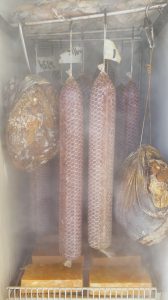
The sausages spent 2 month and 3 weeks in the Curing Chamber until my favorite weight loss for this type of sausages: 45.5%.
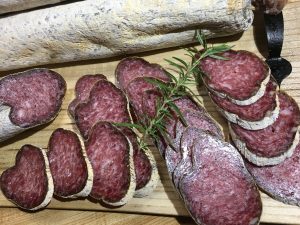
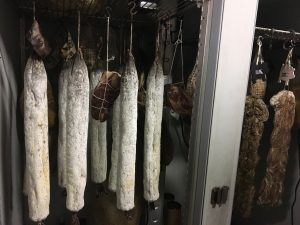


 Русский
Русский